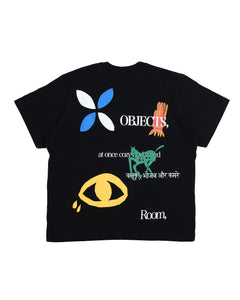Material Information

Recover Yarn (Recycled Cotton) - We have perfected the art and science of handcrafting sustainable recycled cotton fiber over 75+ years across four generations of family in Spain. Today, we offer a scaled solution to transform textile waste into low-impact, high-quality sustainable recycled fiber. We are on a mission to help create a sustainable future by solving one of the world’s biggest environmental issues.

GOHEMP - positions hemp as a natural high-tech fiber, and develops fabrics that are blended with ecological and organic materials, always proposing new textures and gentle colors.
The reason why GOHEMP uses hemp to make clothes is the characteristics of the material.
The cross section of the fiber is hollow, so it has excellent moisture absorption and quick drying properties, and is very strong as a fiber. Compared to other plants, it requires less water to grow and is grown without pesticides, so it has a very low environmental impact. In addition, it grows to a height of 2.5m in about 110 days, and it is considered an environmentally friendly material because it can be expected to convert a large amount of carbon dioxide into oxygen and improve the soil in the process of growth.
In Japan, since ancient times, hemp has been used as a fiber, food, and raw material in daily life. In the Edo period, it was counted as one of the three essential herbs for the private sector, along with indigo and safflower.

Dralon - Created in 1954, Bayer launched on the market a new polyacrylic fiber called “dralon" ®. This high-tech material was soon to become a bestseller due not only to its softness and warmth but also because it guarantees durability, tear strength and sustainability. Dralon is a good synthetic alternative for people with wool sensitivities.
Whole Garment Knitting (WG) - Typically, a knitted garment consists of separate parts-the front and back body panels and the sleeves-which are sewn together afterward. In sharp contrast, our revolutionary WHOLEGARMENT® knitwear is produced in one entire piece, three-dimensionally, directly on the knitting machine. Consequently it requires little to no expensive, time-consuming post-production labor. The "ideal knitwear," WHOLEGARMENT® products raise the essential attributes of knitwear, comfort, lightness and resilience-to an entirely new level of sophistication.
Organic Cotton (OC) - Organic cotton is more sustainable and ethical than regular cotton, protecting the environment where it is grown whilst also providing a stable income with fair wages for those who produce it. Organic cotton uses no chemical pesticides or fertilizers, limits soil erosion and is less thirsty than normal cotton.
The advantages of organic cotton extend beyond sustainability, ethics and economics. Clothes made from organic cotton are also higher quality, softer, and more durable. Here are the benefits of organic cotton and a complete guide on why organic cotton is better than normal cotton.
Recycled Cotton (Re Cotton) - The majority of recycled cotton is claimed through mechanical recycling. First, fabrics and materials are sorted by color. After sorting, the fabrics are run through a machine that shreds the fabric into yarn and further into raw fiber. This process is harsh and puts a great deal of strain on the fiber. It is not uncommon for fibers to break and entangle during shredding. The raw fiber is then spun back into yarns for reuse in other products. The quality of recycled fiber will never have quality values equal to the original fiber. Specifically, fiber length and length uniformity will be impacted, which will limit the end-use application.


